When thinking of Ethiopia, its rich cultural heritage and historic landscapes often come to mind. Yet, another aspect of this fascinating nation is its agricultural bounty. Let's dive into the world of Ethiopian products, starting with the most famous one – coffee.
Coffee: The Crown Jewel
Coffee is synonymous with Ethiopia, often referred to as the birthplace of this beloved beverage. The rich soil and unique climate conditions of Ethiopia create an ideal environment for cultivating coffee beans. Ethiopian coffee is renowned for its exceptional quality, distinct flavors, and rich history. The country's coffee heritage is not just about planting and harvesting; it's embedded in the cultural and social fabric of the nation.
Legend has it that coffee was discovered by an Ethiopian goat herder named Kaldi around the 9th century. Kaldi noticed that his goats became unusually energetic after eating the berries from a certain tree. Curious, he tried the berries himself and experienced a similar burst of energy. This led to the spread of coffee cultivation across Ethiopia and eventually to the rest of the world.
Ethiopia produces several varieties of coffee, with beans primarily classified into regions such as Sidamo, Yirgacheffe, and Harrar. Each region produces beans with distinct taste profiles, ranging from fruity and floral to earthy and spicy. The Yirgacheffe coffee, for instance, is celebrated for its bright acidity and floral notes, often described as tea-like with hints of jasmine. On the other hand, Sidamo beans are known for their sweet, fruity flavors with a mild, balanced acidity.
The traditional method of processing coffee in Ethiopia is known as the dry or natural process. In this method, coffee cherries are dried in the sun with the bean still inside the fruit, which adds a unique complexity to the flavor. Modern techniques, such as the washed process, are also employed, which involves removing the fruit from the bean before drying. This method highlights the pure qualities of the bean's flavor profile, making it cleaner and more vibrant.
The significance of coffee in Ethiopia transcends economic value. Coffee ceremonies are a central part of the social and cultural life in Ethiopia. These ceremonies can last several hours and involve the roasting of green coffee beans, grinding them by hand, and brewing the coffee in a traditional pot called a jebena. Guests are invited to share in the three rounds of coffee, each symbolizing a transformation in the essence of the brew.
Ethiopia's coffee production is also vital to its economy. The country is among the world's top coffee producers, with millions of smallholder farmers relying on coffee cultivation for their livelihoods. The Ethiopian Coffee and Tea Development Authority plays a crucial role in supporting farmers, improving production techniques, and maintaining the high standards of Ethiopian coffee. Export revenues from coffee have a significant impact on the national economy, creating employment opportunities and contributing to the country's development.
Research has shown that Ethiopia could further increase its coffee production by implementing sustainable farming practices and investing in infrastructure improvements. Climate change poses a significant threat to coffee cultivation, with rising temperatures and unpredictable rainfall patterns affecting crop yields. Initiatives are underway to address these challenges, including training farmers in climate-resilient practices and promoting the use of shade-grown coffee to protect plants from extreme weather conditions.
Notably, the specialty coffee market has grown rapidly, with consumers showing a willingness to pay premium prices for high-quality beans. This trend has led to increased demand for Ethiopian coffee, known for its unique flavors and commitment to traditional cultivation methods. Participating in global coffee competitions and engaging with international buyers help Ethiopian farmers gain recognition and access lucrative markets.
In summary, Ethiopian coffee is more than just a beverage; it is a way of life. The rich flavors, deep-rooted history, and cultural significance make Ethiopian coffee a treasured commodity worldwide. By embracing sustainable practices and exploring new market opportunities, Ethiopia can continue to thrive as a top coffee producer, sharing its crown jewel with coffee lovers around the globe.
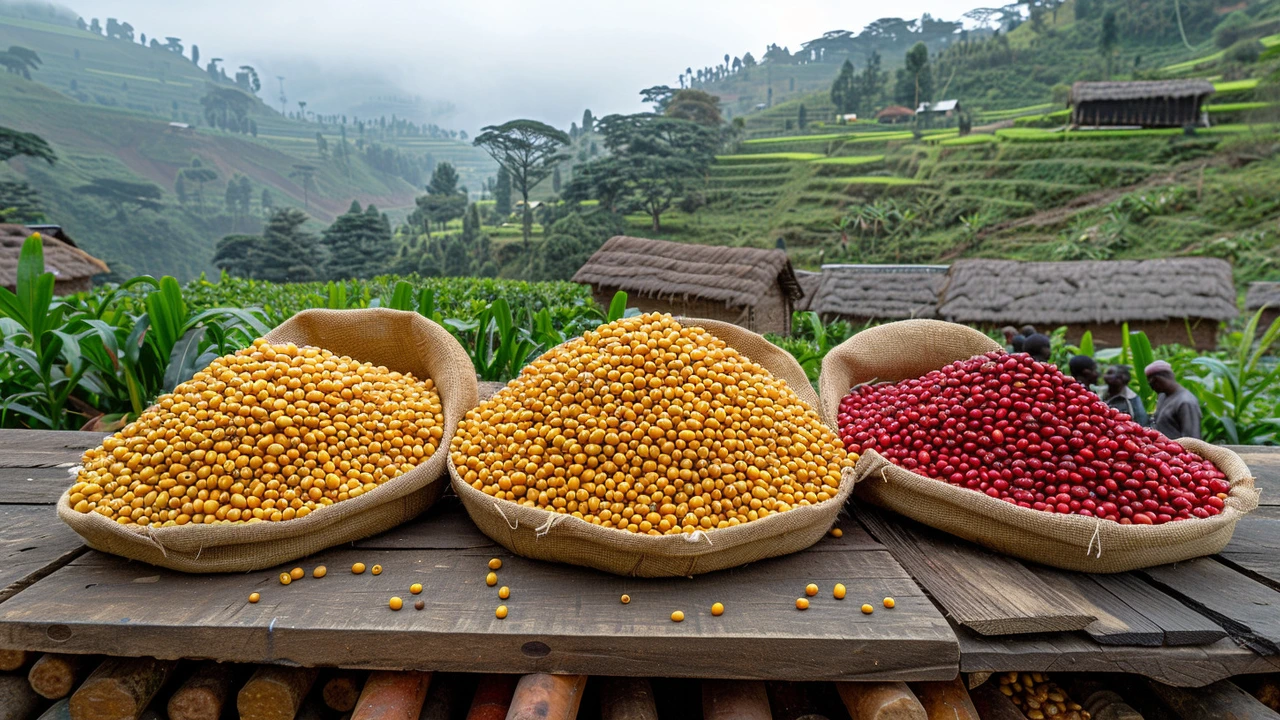
The Role of Pulses
In the verdant landscapes of Ethiopia, pulses play a pivotal role both in diets and in the economy. These are not just crops; they form an essential part of the Ethiopian way of life. Pulses, such as lentils, chickpeas, and faba beans, are cultivated widely across the country, often intercropped with cereals to maximize land use. They hold a unique position because they enrich the soil with nitrogen, making them an indispensable part of sustainable farming practices in Ethiopia.
The significance of pulses extends beyond their agricultural benefits. They are a major source of protein for the population, often replacing meat in many traditional dishes. Pulses are also relatively affordable, enhancing food security by being a reliable protein source. According to data from the Food and Agriculture Organization (FAO), pulses account for about 15% of the country's agricultural exports, bringing in much-needed foreign exchange.
Pulses' adaptability to various climatic conditions makes them suitable for different Ethiopian regions, from the highlands to the semi-arid zones. The South Gondar region, for instance, is known for its high-quality faba beans, while chickpeas are predominantly grown in the Oromia region. The versatility of pulses means they are cooked in countless ways, from spiced stews to simple boiled preparations. This makes pulses a beloved staple in Ethiopian homes.
"Pulses are fundamental to our agricultural systems and diets. They not only provide essential nutrients but also improve soil health and boost farmers' yields." - Dr. Alemitu Abera, an agricultural scientist.Such statements highlight the multipurpose value of pulses. The nutritional profile of these legumes includes high levels of iron, zinc, and folate, making them particularly valuable in combating malnutrition, which is a pressing issue in many developing nations, including Ethiopia.
Commercially, the export quality of Ethiopian pulses is renowned for their size and uniformity. The government has been investing continuously to enhance the production quality by providing training to farmers and introducing better farming techniques. Additionally, several cooperatives focus on selling pulses directly to international markets, ensuring fair trade practices and better income for local farmers. To illustrate, a cooperative in Amhara successfully increased its revenue by 20% last year by targeting European and Middle Eastern markets for their faba beans.
The Ethiopian pulse sector also faces challenges, such as insufficient access to modern farming tools and fluctuating market prices. Nonetheless, efforts are ongoing to address these issues. Government and non-governmental organizations work in tandem to promote sustainable practices through education and subsidized programs. As a result, the pulse sector is slowly but steadily evolving with instances of remarkable progress.
The role of pulses in Ethiopia’s agriculture and diet cannot be overstated. They not only sustain the local population but also play a critical role in export markets, contributing significantly to the nation’s economy. Their dual function of providing essential nutrients and improving soil fertility underscores why they are cherished and cultivated widely across the country.
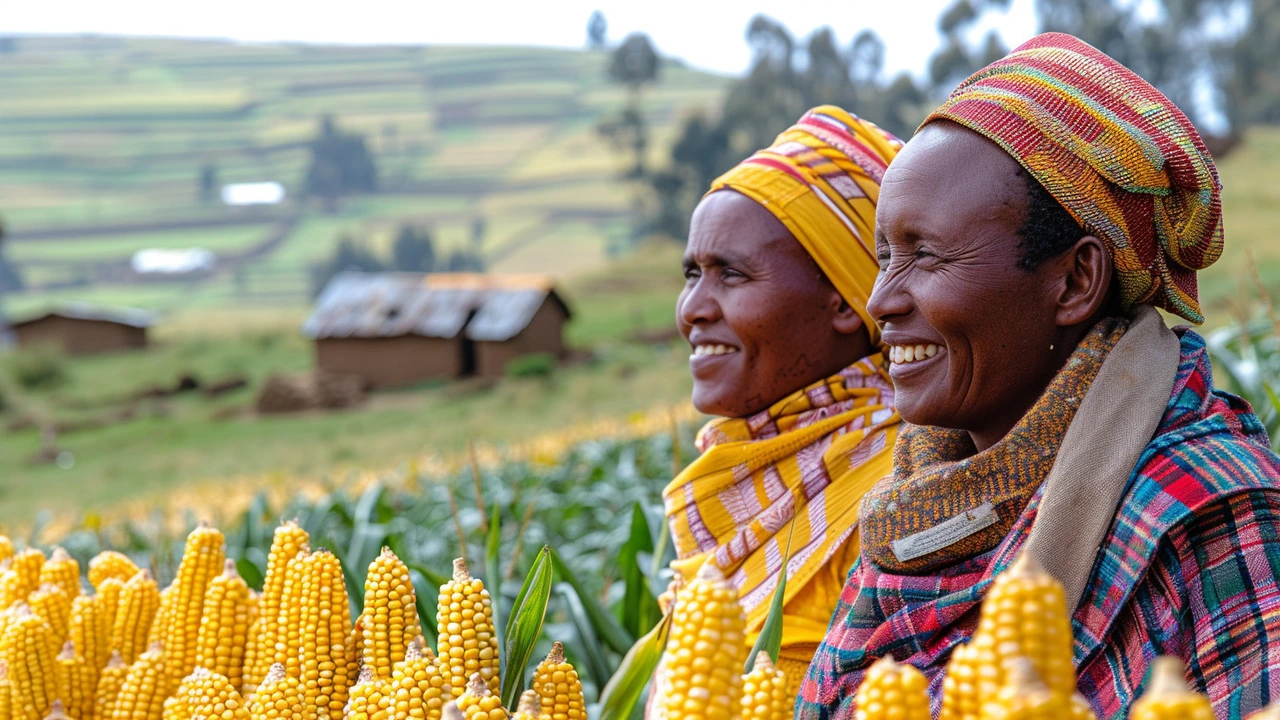
Rising Star: Horticulture
In recent years, Ethiopia has been making significant strides in the world of horticulture. This sector is growing rapidly and becoming a key player in the country's agricultural export economy. Ethiopia's climate, with its ample sunshine and varying altitudes, provides an ideal environment for cultivating a wide variety of fruits, vegetables, and flowers.
One of the standout products in Ethiopian horticulture is roses. Ethiopia's rose farms, predominantly located near Addis Ababa and in the Rift Valley, have gained international recognition for their quality and beauty. Thanks to greenhouse technology and efficient supply chains, Ethiopian roses are now a common sight in European markets. The country's floriculture industry is blooming, creating thousands of jobs and contributing substantially to the economy.
Beyond flowers, Ethiopia is also establishing itself as a major producer of fruits and vegetables. Crops like avocado, mango, and banana are thriving, thanks to both the favorable climate and the adoption of modern farming techniques. Avocado, in particular, is quickly becoming a leading export product, with markets as far as Europe and the Middle East being targeted.
Horticulture is empowering many local farmers, providing them with opportunities to diversify their income sources. Programs aimed at capacity building and technology transfer are helping farmers improve yield and quality. With government support and investments from international organizations, smallholder farmers are being introduced to new varieties and cultivation methods.
Sustainability is another key aspect of Ethiopia's horticultural sector. Initiatives focused on sustainable farming practices are taking root, aimed at reducing environmental impact and ensuring long-term productivity. Techniques like drip irrigation and organic fertilization are becoming more commonplace, reflecting a shift towards a more ecological approach to farming.
Moreover, private sector participation in horticulture is increasing. Companies are investing in infrastructure, research, and development to enhance the quality and marketability of Ethiopian produce. Partnerships with international firms are fostering knowledge exchange and bringing cutting-edge technologies to local farms.
"Ethiopia's horticulture sector has witnessed tremendous growth over the past decade, transforming the lives of many and contributing to the nation's economy," said an official from the Ministry of Agriculture. "With continued support and innovation, our produce will reach new heights in both quality and quantity."
As demand for fresh and organic produce continues to rise globally, Ethiopia's horticulture sector is well-positioned to capitalize on this trend. The focus on quality, sustainability, and innovation will undoubtedly drive further growth, cementing Ethiopia's place on the global agricultural map. In the coming years, it's exciting to envision how this dynamic sector will evolve and what new heights it will reach.
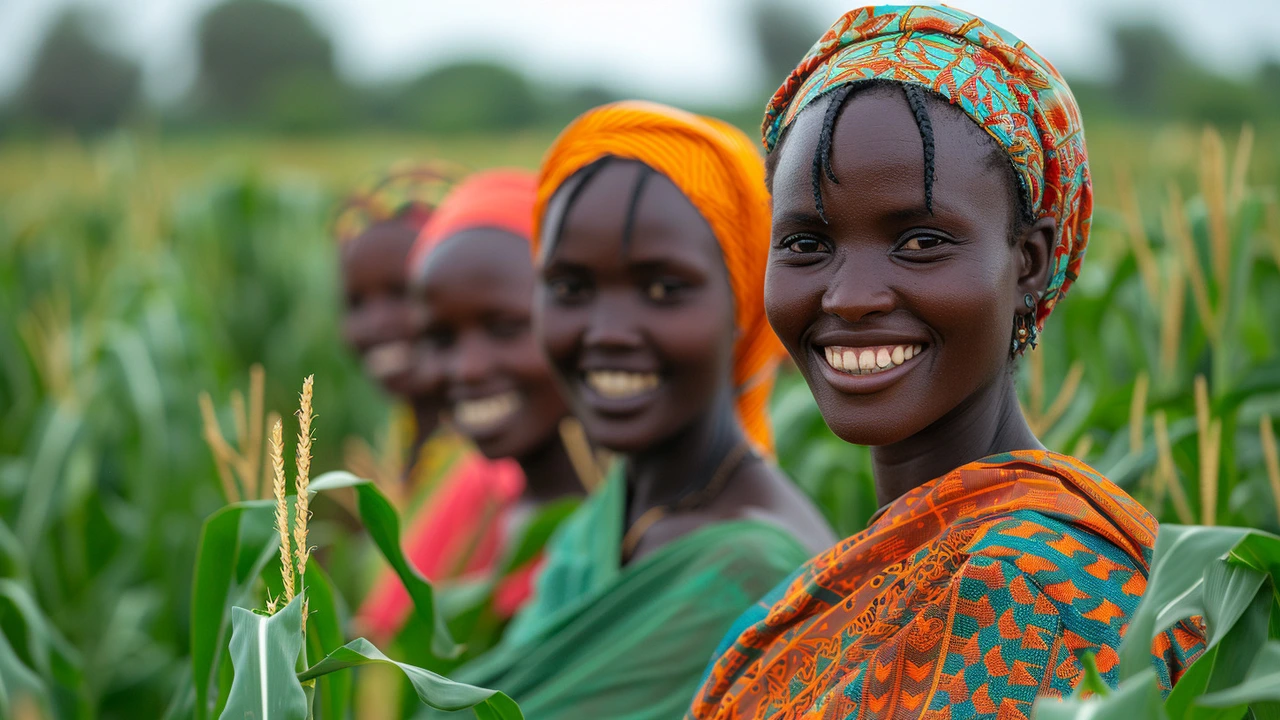
Traditional Grains and Seeds
When it comes to Ethiopia’s rich agricultural heritage, traditional grains and seeds hold a place of pride. One of the most significant crops is teff, an ancient grain that has been grown in Ethiopia for thousands of years. Teff is valued not only for its resilience in local climates but also for its high nutritional content. Small and packed with nutrients, it’s no wonder that teff is a staple in the Ethiopian diet.
Teff is unique because it's gluten-free and exceptionally rich in iron and calcium, making it a key ingredient in the traditional flatbread, injera. This grain has seen a rise in popularity outside Ethiopia as well, particularly in health food markets. It is grown predominantly in the highlands, and its ability to thrive in both drought and waterlogged conditions makes it incredibly versatile.
Besides teff, Ethiopia also produces significant amounts of sorghum. Sorghum is another resilient crop and stands as one of the oldest grains cultivated by humanity. Known for its drought resistance, it is ideal for the semi-arid regions of Ethiopia. Sorghum is used in various forms, from flour to porridge, and even traditional beverages.
Another important grain is barley. Grown mostly in the highlands where it's cooler, barley is a crucial element in Ethiopian agriculture. It's used for making staple foods and beverages. Not surprisingly, Ethiopia ranks among the largest barley producers in Africa.
Additionally, Ethiopia is notable for its production of sesame and linseeds. These seeds are highly sought after on the global market due to their oil content and nutritional benefits. Sesame seeds from Ethiopia are known for their quality and are often exported to Europe and Asia. These seeds provide an essential income source for many Ethiopian farmers.
In a quote, the Ethiopian Agricultural Transformation Agency noted,
"Traditional grains like teff and barley are not just foods; they are cultural symbols that represent the resilience and rich history of Ethiopian agriculture."This sentiment is echoed by farmers who have passed down the knowledge of cultivating these grains through the generations.
Here’s a closer look at the nutritional content of some of these grains:
| Grain | Iron (mg per 100g) | Calcium (mg per 100g) |
|---|---|---|
| Teff | 7.6 | 180 |
| Sorghum | 4.4 | 13 |
| Barley | 2.5 | 29 |
The cultivation of these traditional grains and seeds is deeply embedded in Ethiopian culture and history. It’s not just about sustenance; it’s about maintaining a connection to the past while providing for the future. As global markets begin to appreciate the benefits of these ancient grains, Ethiopian farmers find new opportunities to share their heritage with the world.
Emphasizing sustainability and tradition, these grains symbolize more than just food – they are a testament to the enduring spirit of Ethiopian farmers and their ability to adapt and thrive through centuries.
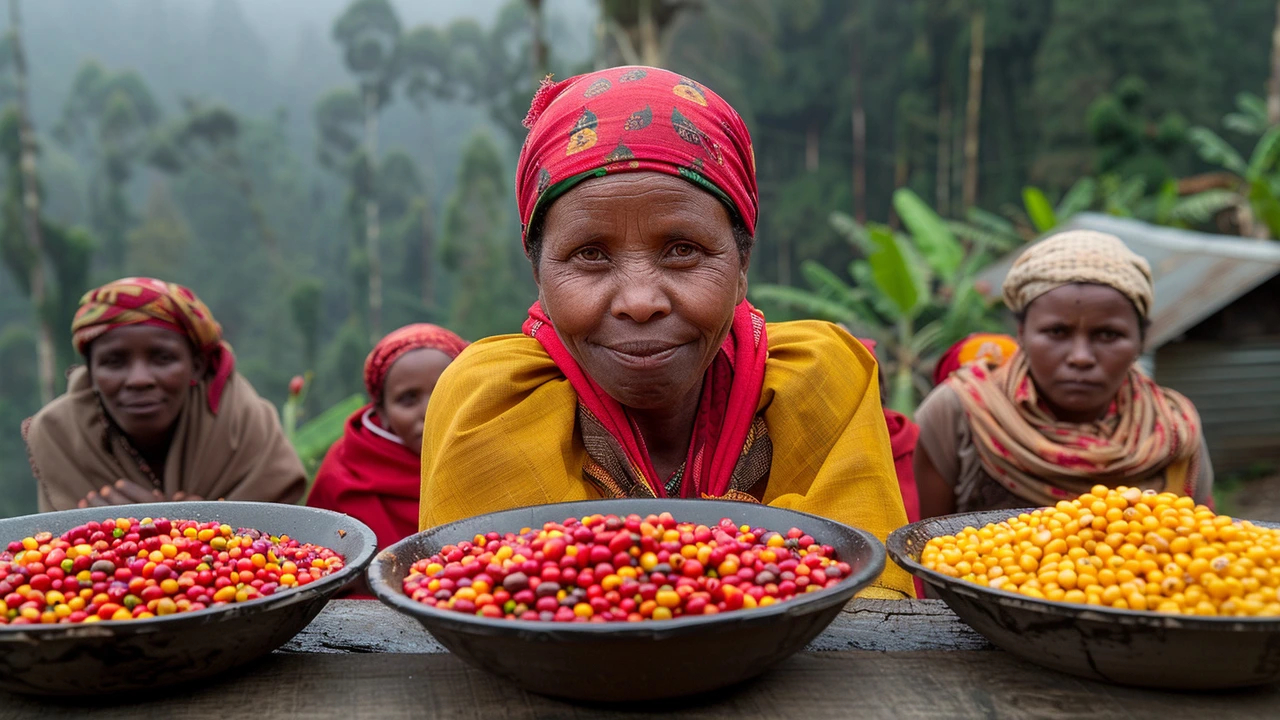
 Leading Causes of Death in Ethiopia: A Detailed Overview
Leading Causes of Death in Ethiopia: A Detailed Overview
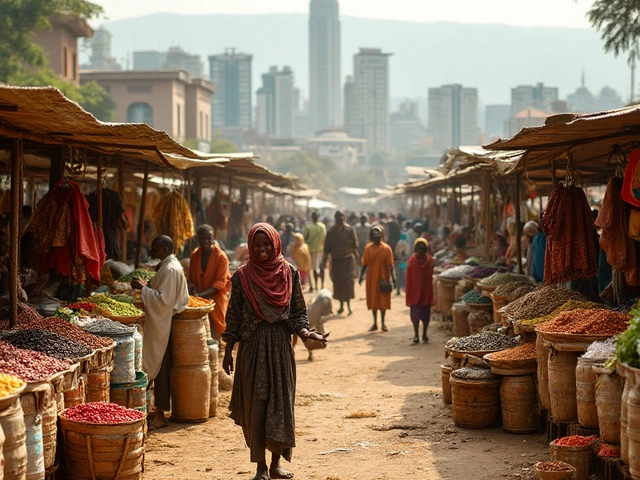 Most Profitable Investments in Ethiopia for 2024
Most Profitable Investments in Ethiopia for 2024
 Understanding Pharmacist Salaries in Ethiopia: What You Need to Know
Understanding Pharmacist Salaries in Ethiopia: What You Need to Know
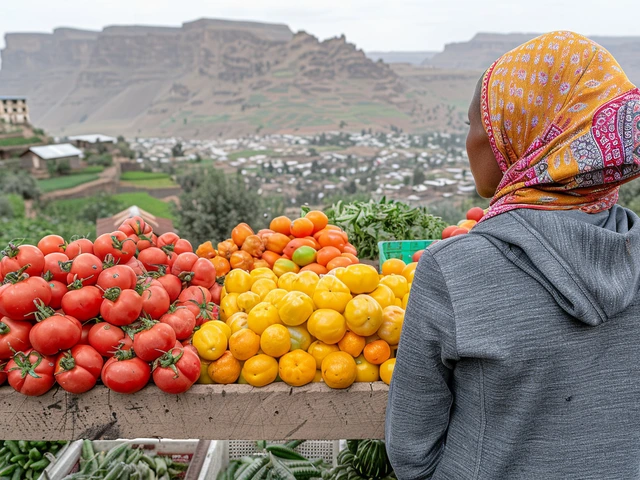 Profitable Business Opportunities in Ethiopia: Exploring Lucrative Ventures in 2024
Profitable Business Opportunities in Ethiopia: Exploring Lucrative Ventures in 2024
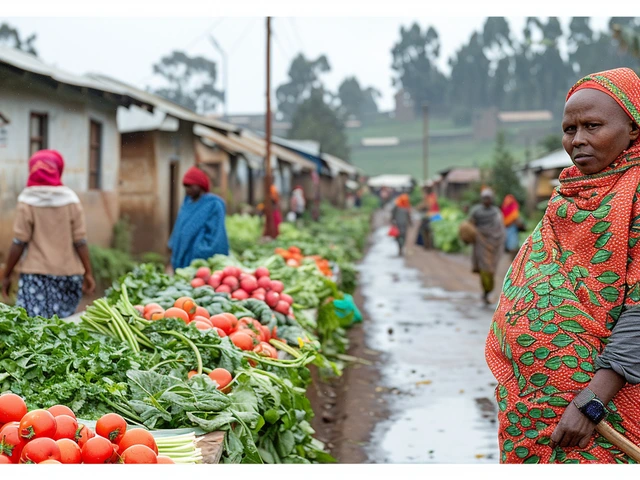 Understanding the Average Income in Ethiopia Measured in US Dollars
Understanding the Average Income in Ethiopia Measured in US Dollars
RUBEN INGA NUÑEZ
July 3, 2024 AT 21:33Ethiopia's coffee legacy is unmatched, no contest.
Michelle Warren
July 6, 2024 AT 07:53Wow, this post kinda feels like a laundry list of facts that anyone with a half‑brain can google. Coffee’s great, sure, but you left out the whole drama of price volatility that farmers suffer. And don’t even get me started on how the "rising star" horticulture buzz could just be another marketing gimmick. Still, props for the effort.
Christopher Boles
July 8, 2024 AT 18:13Great overview! It’s worth highlighting that pulses not only boost soil nitrogen but also provide a crucial protein source for communities that can’t afford meat regularly. Their resilience to drought makes them a pillar of food security in the highlands.
Crystal Novotny
July 11, 2024 AT 04:33Pulses are overrated they’re just legumes and people hype them for no reason
Reagan Traphagen
July 13, 2024 AT 14:53Don’t be fooled – the so‑called “sustainable” coffee push is a front for the big corporate cartels to lock in farmers with debt. Climate change? That’s just a cover story to justify more controls over what growers can plant.
mark sweeney
July 16, 2024 AT 01:13Yo, you’re barking up the wrong tree. The coffee giants are actually funding climate‑smart projects that help farmers adapt, not enslave them. Think about the shade‑grown trials that have cut heat stress by 30%.
randy mcgrath
July 18, 2024 AT 11:33Teff’s iron content rivals that of red meat, making it an essential grain for combating anemia. Its gluten‑free nature also opens doors for health‑conscious consumers worldwide.
Frankie Mobley
July 20, 2024 AT 21:53Exactly, and the global demand for teff flour has surged, especially in the United States and Europe, providing new export income for Ethiopian farmers.
ashli john
July 23, 2024 AT 08:13Love how Ethiopia’s horticulture is moving towards drip irrigation – it really cuts water use and boosts yields. Those greenhouse roses are a perfect example of tech meeting tradition.
Kim Chase
July 25, 2024 AT 18:33yeah its awesome how community coops are sharing that tech its giving small farms a real chance to compete on the global market
David Werner
July 28, 2024 AT 04:53Don't trust the rosy picture of pulses – the seed supply is tightly controlled by a handful of multinational firms that dictate prices and varieties. If you look closely, you’ll see a hidden agenda to monopolize the market.
Paul KEIL
July 30, 2024 AT 15:13While the conspiracy narrative is tempting, the empirical data show that pulse yields have increased by 12% over the past five years due to agronomic innovations rather than corporate sabotage. The focus should remain on scaling proven agronomic practices.
Horace Wormely
August 2, 2024 AT 01:33Just a quick note: “increasing” should be “increase” and “farmer’s” needs an apostrophe‑free plural “farmers”. Minor errors, but the facts still stand.
christine mae cotejo
August 4, 2024 AT 11:53Reading through this comprehensive survey of Ethiopian agricultural marvels, one cannot help but feel a profound admiration for a nation that has turned its diverse topography into a veritable laboratory of food production. The ancient grain teff, with its diminutive seed size, packs an iron and calcium punch that rivals many animal proteins, and its gluten‑free heritage has opened doors in health‑conscious markets far beyond the Horn of Africa. Meanwhile, the legendary coffee regions of Sidamo, Yirgacheffe, and Harrar continue to set the benchmark for flavor complexity, offering bouquets of jasmine, citrus, and earth that are rarely replicated elsewhere. Pulses such as lentils, chickpeas, and faba beans not only enrich the soil through nitrogen fixation but also provide a critical source of protein for populations that lack regular access to meat. The horticultural renaissance, highlighted by the prolific cultivation of roses, avocados, and mangoes, showcases Ethiopia’s embrace of modern agritech, from drip irrigation to greenhouse climate control, propelling the country onto the global stage of fresh produce exporters. Moreover, the integration of traditional practices-like the ceremonial coffee brew in a jebena-preserves cultural identity while fostering community cohesion. The strategic focus on sustainability, evident in shade‑grown coffee and organic fertilization, reflects an awareness of climate challenges that threaten staple crops worldwide. Efforts to mitigate these threats through farmer education, climate‑resilient varieties, and infrastructural investment are commendable and essential for long‑term food security. As global demand for specialty coffee and nutrient‑dense grains continues to rise, Ethiopia stands poised to capitalize on its unique agricultural portfolio, provided it can navigate market volatility and maintain equitable trade practices. Ultimately, this tapestry of crops, traditions, and innovations underscores a resilient agricultural ethos that blends centuries‑old wisdom with forward‑looking technology, promising a vibrant future for Ethiopian farmers and consumers alike.